This article was co-authored by Mark Co, DPM. Dr. Mark Co is a Podiatrist who runs his own private practice in San Francisco, California. Dr. Co specializes in treatments for bunions, ingrown toenails, toenail fungus, warts, plantar fasciitis and other causes of foot pain. He also offers custom orthotics for the treatment and prevention of foot and ankle issues. Dr. Co completed a Master of Business Administration (MBA) at New York University and an MA in Electrical Engineering and Computer Science at Johns Hopkins University. Dr. Co also completed his DPM at the California School of Podiatric Medicine and a residency and internship at the Kaiser Permanente Medical Center, Santa Clara, California. Dr. Co was awarded San Francisco's "Top 3 Podiatrists" in 2018, 2019, and 2020. Dr. Co is also a member of the CPMA (American Podiatric Medical Association).
There are 11 references cited in this article, which can be found at the bottom of the page.
This article has been viewed 38,025 times.
When someone gets an injury like a sore toe, it's always best to consult with a medical professional, like a doctor or urgent care clinic employee, however, there are methods you can use at home that can help you feel a bit better. Many parts of your toe can get hurt, such as the bones, joints, tendons, ligaments, nerves, blood vessels and muscles.[1] The pain can be lessened by addressing the physical symptoms or by using the power of your mind.
Steps
Relieving the Pain
-
1Assess the injury when it happens. Check to see if there is an open wound in case you need urgent help. A broken toe is serious and cannot be fixed at home in case it is broken or fractured. You may need a cast, splint or medication. If your toe is cold, numb, tingling, blue or grey, also go to the nearest emergency room. Basically, if anything looks unusual or scares you, it's time to go to the doctor.[2] .
- Be sure to rest your foot. Don’t walk on it! You may want to elevate your foot above your heart by propping it on a table or stool while you treat it or let it relax. No one wants to wear out an already painful body part.[3]
- If your injury is from walking, consider getting new shoes or a gel cushion insert. It can be a result of uncomfortable, ill-fitting, or damaged shoes, or exercise. Think about how you might have incurred the injury. Sometimes if this is a chronic condition, a doctor could recommend exercises or surgery.[4]
- If you just have a small cut, clean it, put antibiotic ointment on it and put on a bandage.
- Some pain might just be normal pain from walking in an uncomfortable shoe. If this is the case, just don't wear those shoes again while exercising.
-
2Put heat or cold onto your toe. Hot and cold temperatures can help alleviate all sorts of pain.[5] You may also consider rubbing your toe since some say a massage helps tired feet. You can use lotion and rub the parts of the toe that hurt to relax and soothe tense muscles.
- Heat helps soothe muscles and cold is anti-inflammatory and numbing. This will help your toe feel better temporarily and offer you some relief.[6] For these reasons, cold is better to use on a direct injury or discomfort (like if you stubbed your toe), while heat should be used for general discomfort without an obvious cause (i.e. a chronic ache in your toe).
- Heat and cold are remedies for many different types of injuries and pain. Remember this for the future!
Advertisement -
3Take medication. This might include over-the-counter fixes like topical creams or ointments or taking an anti-inflammatory drug like ibuprofen.[7] Nonsteroidal anti-inflammatory drugs include ibuprofen (Motrin, Advil) or naproxen (Aleve, Naprosyn).[8] While it won't fix the actual problem, medicines from a regular pharmacy or store can help alleviate some of the pain. Remember, if there is a physical problem that looks really bad, seek help outside of your home.
- Always read the labels and warnings for medicines.
- If in doubt, ask a local pharmacist what type of medicine is best.
- Talk to a doctor before giving aspirin to a child or teenager under 19. Aspirin can put your child at risk for a rare but serious condition called Reye's Syndrome.
- Some anit-inflammatory drugs have blood-thinning properties, which is not always appropriate for everyone (such as people already taking blood thinners), or should be avoided if you are bleeding. If you take blood thinners, talk to your doctor about which over-the-counter products are acceptable for you to use
Distracting Yourself
-
1Picture the pain leaving your body. Imagine it’s moving toward the tip of your nose. Then think of the hurt flying out. It's like magic. You might want to try pretending to blow the pain away, instead. Remember, you can use this trick with other bodily pain, too.
- Never underestimate the power of the mind.
- Picturing the pain leaving your body might just make pain leave your mind.
-
2Think about food. Studies show that getting your mind onto food, a positive thought, helps you avoid the pain. Instead of focusing on the pain, you will become immersed in memories or fantasies of the taste. It's a bit of a distraction. Besides, thinking of pizza is way better than thinking of a bad toe!
- One study showed that chocolate is the most popular food fantasy.[9]
-
3Do something else. When you get your mind off your toe, you can lessen the mental pain. Distraction takes your mind away from the bad feelings. You may have already done this on your own by watching TV or playing with your phone to distract yourself from your feelings. You can also find a good book or music, or focus on your breathing in and out.
-
4Use imagery. In your mind, see yourself as a painless person or pretend different passageways in your body that transmit pain are cut off. Imagining things in your mind other than what is actually going on can help your mind take you to different places. Instead of focusing on the pain at hand, you will relax and go someplace else.
- Start out by closing your eyes and breathing slowly.
- Using imagery might take time to master, but it’s worth trying.
Checking on the Severity
-
1Check on the injury a few hours later. You’ll need to watch your injury. If the pain is severe, or if your toe swells and has redness or warmth, go to the doctor.[12] Make sure you have not developed an infection. Remember, it's better to be safe than sorry.[13]
- If it is bleeding or draining, your toe needs to checked out by a medical professional
- Don’t just rely on your friends for medical advice. Ask doctors, nurses and other specialists.
- Some people have lost toes from untreated injuries, so it's better to be on the safe side.
- It’s a good idea to always know the nearest route to the emergency room.
-
2Evaluate if medicine is working. If any medicine you took is not working in about an hour, you may need to get more help. You might have a more severe problem that requires medical attention. Remember, not all toe injuries can be treated at home.
- Keep track of what medicines or methods you have tried on your toe so that if you go to the emergency room later on you know what to report to the doctors.
- Always tell someone you trust if you are having strange symptoms from medicine.
-
3Go to the doctor if the injury gets worse. If your toe is extremely painful, if your toe is pointing in the wrong direction, or if it's going numb due to swelling, you should see a doctor right away.[14] Remember that some injuries can get worse over time. It's not ok to just "fix" the problem and completely forget about it.
- Sometimes a broken toe may point in the wrong direction. However, it could also be broken without being displaced, so the only definitive way to tell whether your toe is broken or sprained is to have an X-ray done. [15]
- If you go to the urgent care or emergency room, be sure to bring a friend or family member.
- Bring your insurance card, identification and wallet to the emergency room or urgent care center. If you are going alone, plan ahead how you will get back if you are unable to drive due to your sore toe.
- Be sure to tell anyone at the doctor's office or emergency room if you have a bone sticking out or any unusual coloration.
Warnings
- Go to the emergency room right away if your toe is pointing in the wrong direction, as it's probably broken.[16]⧼thumbs_response⧽
- Seek medical attention if the same pain persists. You may have a fracture or break and may need x-rays or even surgery.[17]⧼thumbs_response⧽
- Some toe pain can be a sign of another condition. If you have flu-like symptoms, you could have an infection. See a doctor if this occurs.[18]⧼thumbs_response⧽
References
- ↑ http://www.healthgrades.com/symptoms/toe-pain
- ↑ http://answers.webmd.com/answers/1178108/when-should-i-call-a-doctor
- ↑ http://www.webmd.com/pain-management/guide/foot-pain-causes-and-treatments?page=3#1
- ↑ http://www.webmd.com/pain-management/guide/foot-pain-causes-and-treatments?page=3#1
- ↑ http://www.webmd.com/pain-management/try-heat-or-ice
- ↑ http://www.webmd.com/pain-management/try-heat-or-ice
- ↑ http://www.webmd.com/pain-management/guide/foot-pain-causes-and-treatments?page=3#1
- ↑ http://www.webmd.com/pain-management/guide/pain-relievers
- ↑ http://www.health.com/health/gallery/0,,20655874_2,00.html
- ↑ http://www.healthline.com/health-news/mental-five-mental-tricks-to-ease-pain-101413#2
- ↑ http://www.foxnews.com/health/2013/07/05/12-odd-pain-relief-tricks-that-work.html
- ↑ http://www.healthgrades.com/symptoms/toe-pain
- ↑ http://answers.webmd.com/answers/1178108/when-should-i-call-a-doctor
- ↑ Mark Co, DPM. Podiatrist. Expert Interview. 21 April 2020.
- ↑ Mark Co, DPM. Podiatrist. Expert Interview. 21 April 2020.
- ↑ Mark Co, DPM. Podiatrist. Expert Interview. 21 April 2020.
- ↑ http://www.medicinenet.com/broken_toe/article.htm
- ↑ https://www.healthgrades.com/right-care/foot-health/toe-pain
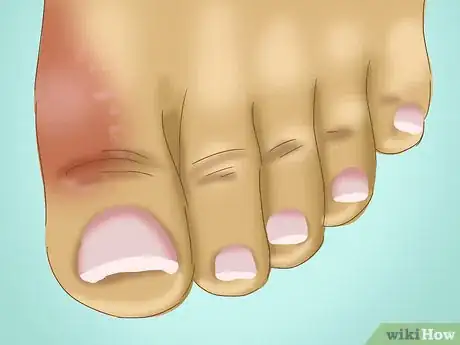
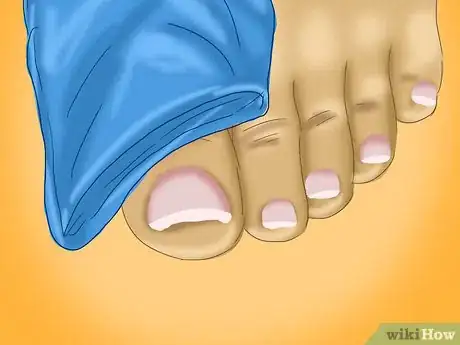
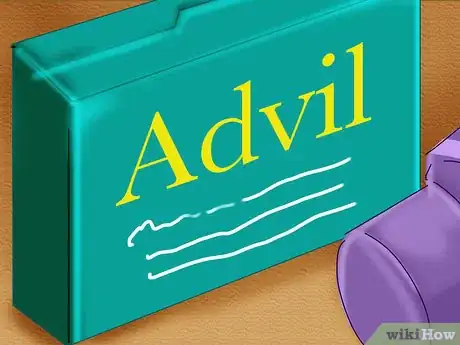
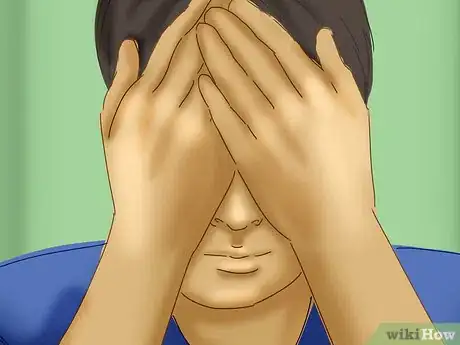


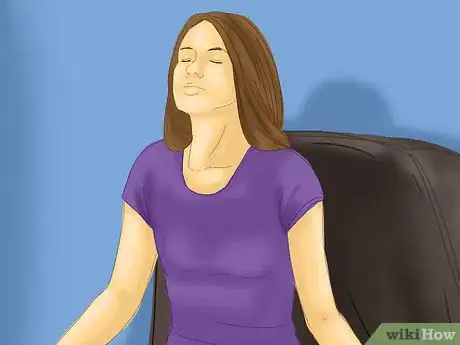
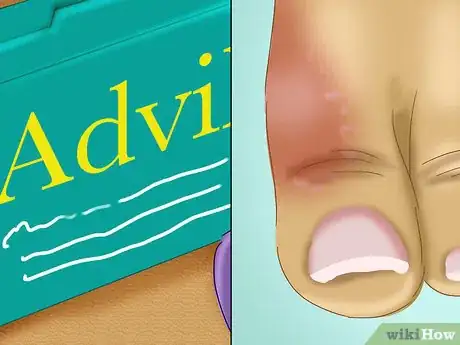

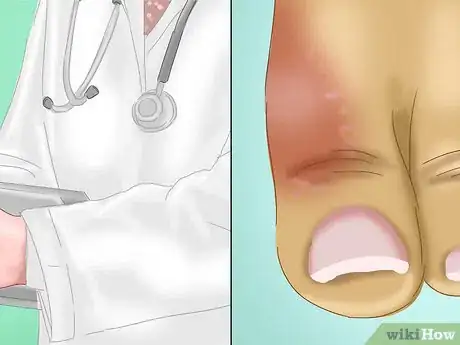

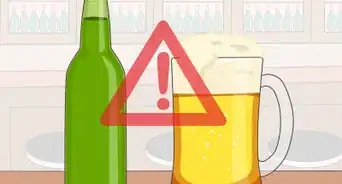













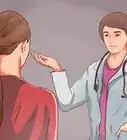

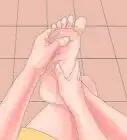




































Medical Disclaimer
The content of this article is not intended to be a substitute for professional medical advice, examination, diagnosis, or treatment. You should always contact your doctor or other qualified healthcare professional before starting, changing, or stopping any kind of health treatment.
Read More...